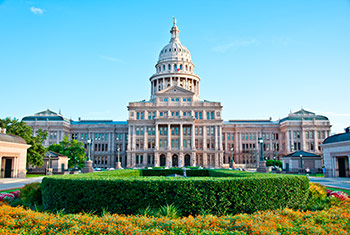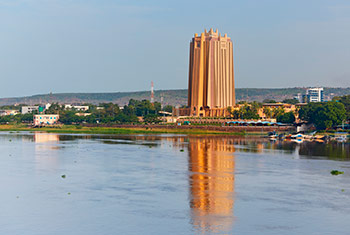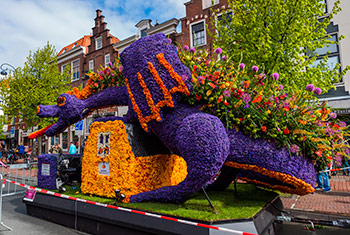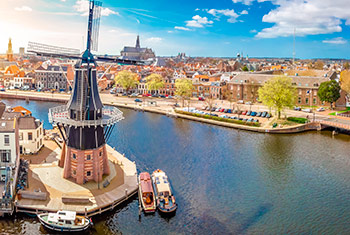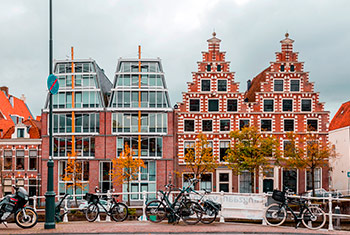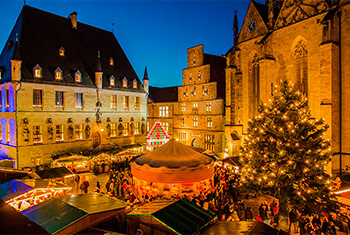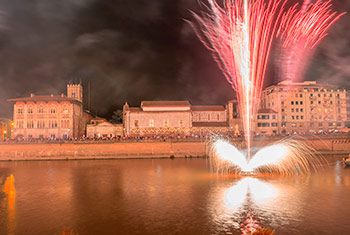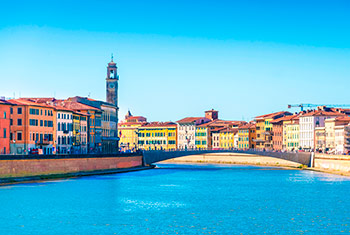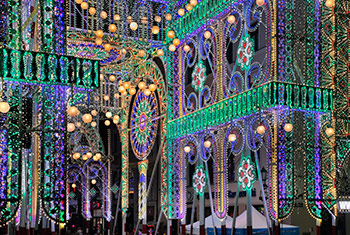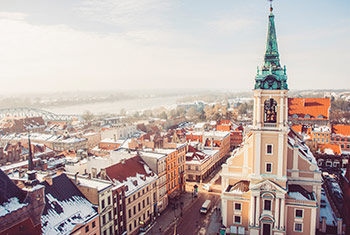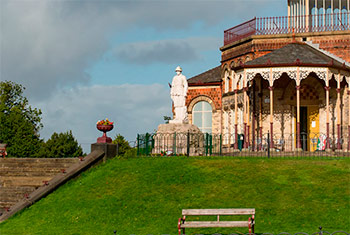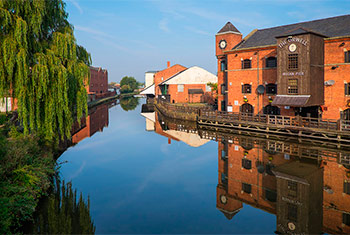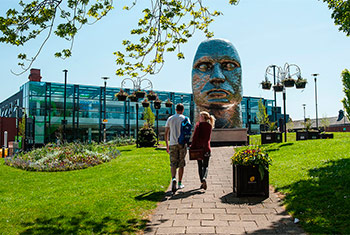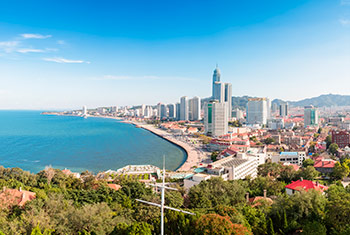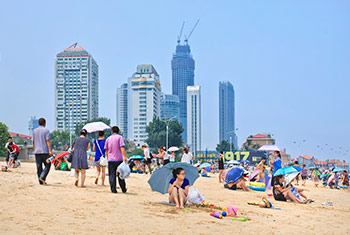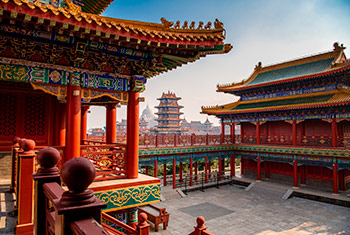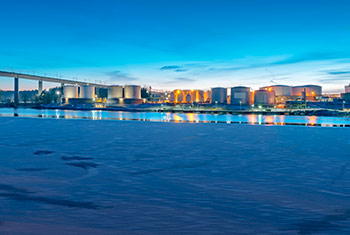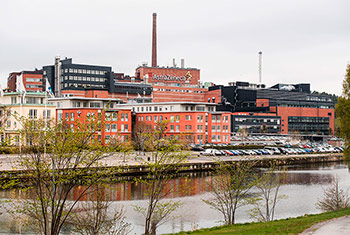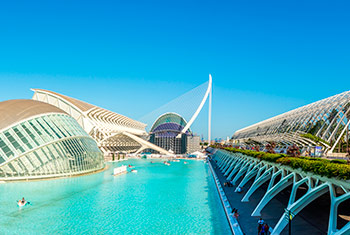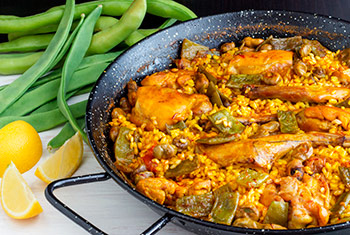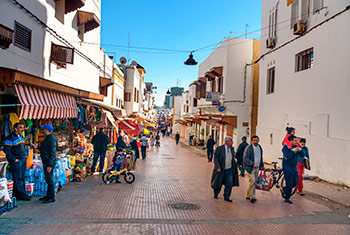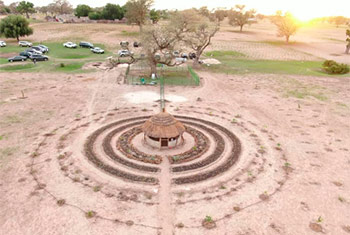Partnerships and sister cities
Sister Cities
The sister city partnership is the oldest form of this institutional cooperation between international communities. It consists of putting in place an agreement between cities, regions, or departments; one being French and the other being international. Traditionally, the other city is European. As a long-term project, it allows for both parties to address issues and the skills of each region, and to mobilize all local players.
Austin, USA (2011)
ID Card
- Partnership created : 2011
- Location : the state of Texas, south of the United States bordering Mexico
- Population : 1 million inhabitants
- Surface area : 828.64 km2 (19 times the size of Angers and 1.2 times the size of the Angers Loire Metropolitan Area)
- Government : Mayor (Kirk Watson), City Manager (Jesus Garza) and a city council (10 council members)
- Next elections : 2024
- Official language : American English and Spanish
Introduction
Created in 1835 and once named Waterloo, the Austin metropolitan area has grown to be the 35th most populated city in the United States of America. With 1 million inhabitants and counting, Austin tops the list as one of the fastest growing cities in the U.S. (+21% between 2010 and 2020). A liberal city enclosed in a conservative state, the “Live Music Capital of the World” has a very positive reputation: 10th most popular city, 4th largest technology hub, 7th in smart mobility, listed in the top 50 most cyclable cities, and home to a highly skilled and educated population. Known for creativity, ecological and innovative efforts, and having a high quality of life… Austin stands out. Austin is a leader amongst its American counterparts as the bridgehead of Texas, situated at the center of the Texan Triangle cities of San Antonio, Dallas, and Houston known as the economic heart of Texas and the southern United States.
City of Austin official website, Ouvre une nouvelle fenêtre
Areas of cooperation
- Developing a sustainable and smart city : ecological transition, circular economy, urban agriculture and promoting local food production, renewable energies, mobility, digitalization, and urban renovation.
- Cultural and creative economy : cinema, live music, art in public places.
- Digital economy and innovation : French Tech, IoT, support for start-ups, digital arts.
- Education and research : secondary and higher education, research.
- Business and economy : wine and gastronomy.
Focus : ATX Street-art
As part of its cultural policy, the city of Angers aims to grant access to culture for all and encourages the expression of art in public places, notably through the Echappées d'Art program. Contributing to this artistic dynamic and riding the street art wave, a practice born in the 60s in the USA, the Angers-Austin cooperative allows for Angevin artists to go to Austin and for Austin artists to come to the region and create or co-create on Franco-American projects. Truly an open-air museum, these murals establish the beginnings of an intercultural dialogue between the artist and the passer-by through an interplay of shapes and colors that display both regions to the world.
Highlights
- Austin days
- Angers Days : in alternating with Austin Days in Angers, the city of Austin celebrates Angers Days in autumn. During a week-long event organized by the Austin Sister Cities International Association, Ouvre une nouvelle fenêtre, France and Angers are honored with a rich program of tastings, concerts, artistic performances, events, and conferences promoting the Angevin art of living.
Bamako, Mali (1974)
ID Card
- Partnership created : 1974
- Location : in the southwest of Mali, along the Niger River
- Population : 2,259,300 inhabitants
- Surface area : 2992 km2 (4.5 times the size of the Angers Loire Metropolitan Area)
- Government : A district, with a mayor, that is divided into six communes each headed by elected mayors
- Next elections : -
- Official language : French and 13 national languages (the Bambara languages is the most commonly spoken)
Introduction
Bamako, the capital of Mali, is located in the southwest of the country along the Niger River. As the country's most populous city, Bamako has experienced exceptional demographic dynamism and spatial expansion over the past few decades (from 658,275 inhabitants in 1987 to over 3 million today). The Bamako district is divided into 6 communes, which are further divided into 66 neighborhoods. Equipped with a river port, Bamako is an important commercial center within the region with a highly service-oriented economy. The city hosts numerous international economic and cultural events, including the Rencontres africaines de la photographie (African Photography Encounters), the Festival international des percussions (International Percussion Festival), and the Festival des réalités (Festival of Realities).
Official website of the Bamako District Town Hall (in french), Ouvre une nouvelle fenêtre
Areas of cooperation
- Public health : establishment of CSCOM: Centres de Santé Communautaire (centers for public health services), in every commune in Bamako with the goal of encouraging the roll-out and support of local health care centers through a multi-year plan to renew equipment, renovate buildings and provide on-going training for healthcare staff.
- Waste management : supplying waste collection equipment, support in waste sorting and waste recovery, the dismantling of electrical and electronic waste (D3E), circular economy, and eco-friendly gestures.
- Early childhood education : establishment of CLAEC: Centres de Lecture et d’Animation Enfantine Communaux (Reading and Learning Center for local children) in every commune to strengthen pre-school educational offerings and student support, exchanges of pedagogical practice, skill enhancement, and site development.
- Sports : creation of three sports facilities and support for sports managers in conjunction with the relevant local agencies (federations, clubs), supply of equipment, training of instructors, development of women's and high-performance sport.
- Culture : collaborative projects.
Focus : Raising awareness of environmental citizenship through waste sorting
This project, launched in December 2021 by the city of Angers and Sanuva Initiatives in Bamako, aims to raise awareness among 500 schoolchildren regarding waste sorting and waste reduction. 46 instructors from CLAEC: Centre de Lecture et d'Apprentissage pour les Enfants de la Commune (Reading and Learning Center for local children) de Torokorobougou in Bamako have a training over the course of 5 days in the challenges of sustainable development. Throughout the year, schoolchildren take part in fun workshops about sorting, collecting, and recycling waste, and building understanding about sustainable development by learning about air and water pollution, deforestation, floods and drought, and the solutions available to combat these problems.
Given the Malian government's decree 2022-738, the City of Angers, like all French institutions, is no longer authorized to set up projects in Bamako. However friendly relations are being maintained with the city and its six communes. The International Department remains at the disposal of Angers-based associations with links to Mali.
Highlights
- Les Odyssées Africaines
Haarlem, the Netherlands (1964)
ID Card
- Partnership created : 1964
- Location : Mid-west, 20km from Amsterdam and 10km from the North Sea
- Population : 158,395 inhabitants (in urban areas : more than 400,000 inhabitants)
- Surface area : 32.11km2 (Angers is 42km2)
- Government : Mayor (Jos Wienan) appointed by the King
- Last elections : March 16, 2022
- Official language : Dutch, English
Introduction
Haarlem is the capital of the Northeast Holland province, about 20 km west of Amsterdam, not far from the North Sea. It is known as a pleasant and safe place to live. Its historic center is very well preserved, with many protected monuments including the medieval town hall and the Church of Saint Bavon. The town also boasts two major museums: the Teyler Museum, the oldest in the Netherlands, and the Frans Hals Museum, which exhibits works by famous painters. Haarlem was one of the first towns to enter a sister city partnership with Angers and Osnabrück in a three-sided agreement established in 1964.
City of Haarlem official website, Ouvre une nouvelle fenêtre (in dutch)
Areas of cooperation
- Sustainability : environment, cycle paths, public procurement.
- Digital technology : exchange of expertise on geographic information systems (GIS).
- Social : social justice, homelessness.
- Citizenship : democracy, community life.
- Youth : workshops on youth health topics, sexual diversity, youth and family centers, exchange of 42 young ambassadors from the sister cities from 1967 to December 2009.
- Culture : book exchanges between libraries, exchanges between high school orchestras, connecting cultural organizations and artists.
- Sports : exchanges between field hockey clubs.
- Economy : exchanges between local breweries.
- Education : educational exchanges.
Focus : Social justice (2019)
The city of Angers was a forerunner in France when setting up PASS: Point accueil santé solidarité (Health and solidarity information center), a municipal service dedicated to supporting homeless adults and people suffering from isolation or addiction. A delegation from Angers visited Haarlem to compare policies directed at helping the homeless, exchange ideas between professionals in the field, and compare practices, services, and facilities.
Highlights
- Angers Fête l’Europe
- The Corso Fleuri : every spring, the Corso Fleuri, Ouvre une nouvelle fenêtre celebrates Dutch horticulture with a parade of floats adorned with thousands of flowers. Entertainment and concerts are scattered along the 40km route from Noordwijk to Haarlem, crossing the "bulb region": tulips, hyacinths, and narcissi carpet the fields and awaken the senses of the million tourists who flock to admire the parade's increasingly dreamlike compositions and the market stalls of Haarlem's Grote Markt.
Osnabrück, Germany (1964)
ID Card
- Partnership created : 1964
- Location : federal state of Lower Saxony, northwest Germany
- Population : 170,000 inhabitants
- Surface area : 119.8 km2 (2.8 times the size of Angers)
- Government : Mayor (Katharina Pötter) and city council
- Next elections : 2026
- Official language : German
Introduction
The economic and cultural center of western Lower Saxony, Osnabrück is the only major German city located in the heart of a nature park, situated between the Teutoburg Forest and the Wiehen massif in the UNESCO Terra Vita geopark. Founded in 780 by Charlemagne, Osnabrück has become an economic crossroads, renowned today not only for car production, but for its logistics and transport enterprises, steel and cable industries, and its food and service companies. It is a university city with almost 21,000 students, a sports city with the VFL football club, and a cultural city. Osnabrück boasts numerous museums and hosts Maiwoche annually: the biggest folk festival in northern Germany. It is also the City of Peace (Die Friedensstadt), in reference to the Treaties of Westphalia which ended the Thirty Years' War in 1648. Every October, children ride through the city on wooden horses to commemorate this event. Osnabrück upholds itself to be a city of remembrance of the destruction of the Second World War: a museum has been created in honor of Felix Nussbaum, a Jewish painter born in Osnabrück and who died in Auschwitz.
City of Osnabrück official website, Ouvre une nouvelle fenêtre
Areas of cooperation
- Economy : focus on exporting with the Angers’ chamber of commerce (CCI) for Angevin companies wishing to establish themselves in the Osnabrück region, Osnabrück at the Job Forum to offer jobs in the sister city, Wine Fair.
- Peace : the Forum for Peace organized by the University of Osnabrück.
- Sustainability : recycling workshops and comparing practices between Angers and Osnabrück.
- Culture : three bands from Angers perform at the Maiwoche music festival every year.
- Youth : Franco-german exchange program OFAJ and the ERASMUS + youth exchange projects outside of school, several school exchanges between Angers and Osnabück every year, the youth ambassador exchange program since 1967, apprentice exchange.
Focus : Europe on stage
This project, run by the city of Angers with the support of the sister cities of Osnabrück and Torun, has enabled young people aged 16 to 19 who are mainly living in priority neighborhoods and for the most part excluded from traditional mobility systems, to develop their European citizenship through art and culture. In 2021, 45 young people came together in Angers to put on a show under the guidance of youth workers from the association L'R de Rien. The show was then presented as part of the Tempo2Rives festival and at the Centre Jean Vilar. To mark the 375th anniversary of the Peace of Westphalia, another project initiated by Onsabrück took place in 2023.
Highlights
- Angers Fête l’Europe
- Maiwoche : The ten-day "Week of May" combines music and folklore. With 700,000 attendees, it is the biggest festival in northern Germany. Every year, a day is dedicated to Angers, during which the relationship between the two cities is celebrated. Three music groups from Angers perform on this occasion.
Pisa, Italie (1982)
ID Card
- Partnership created : 1982
- Location : west coast of Italy, Tuscany
- Population : 90,000 inhabitants
- Surface area : 185 km2 (4 times the size of Angers)
- Government : Mayor (Michele Conti) and city council
- Last elections : 2022
- Official language : Italian
Introduction
Located in northern Tuscany, just ten kilometers from the Mediterranean Sea, Pisa is crossed by the Arno River, the region's most important waterway. The city is home to 50,000 students who contribute to making it a youthful and dynamic city. It boasts 3 prestigious universities and is home to a center of excellence in scientific research. Known throughout the world for its leaning tower, the ancient maritime republic is home to a large number of religious architectural monuments dating back to the Middle Ages and the Renaissance. The Pisa region is also renowned for its fine cuisine.
City of Pisa official website, Ouvre une nouvelle fenêtre
Areas of cooperation
- Culture : collaboration in cinematography, French cinema week in conjunction with the Premiers Plans festival, exchange between circus schools, exchange of musicians. Partnership between the Angers BD Festival and the Pisa Book Festival.
- Promotion of the region : promotion of Angevin wine production, exchanges between Angevin and Pisan breweries, exchanges between unions, the Red Cross and craftsmen.
- Education : exchanges between the ISTIA: Institut des Sciences Techniques de l'ingénieur d'Angers (Angers Institute of Engineering Sciences) and the University of Sant'Anna in Pisa, partnerships between the University of Pisa and the University of Angers, the University Catholique de l'Ouest, and the Ecole Supérieure d'Agriculture (College of Agriculture) in Angers. School exchanges (e.g. High schools David d'Angers and Carducci, Sainte Agnès high school and Institut Pacinotti).
- Sports : participation of four Angevin athletes in the Pisa marathon and participation of athletes from Pisa in the Tout Angers Bouge sports event. Exchanges between soccer clubs, Latin dance associations and rowing clubs.
Focus : Angers takes part in the Pisa 2050 international conference
On November 11, 2022, Hélène Cruypenninck presented the guidelines and achievements of Angers’ urban vegetation policy at the convention "Pisa 2050: Green and blue connections for the city of the future". Ranked 1st green city in France and best French city for biodiversity in 2022 (in the category of cities with over 100,000 inhabitants), Pisa invited Angers to share its expertise in this field and to draw inspiration.
Highlights
- Angers Fête l'Europe
- La Luminara, Pisa's Festival of Lights : Every year, the Festival of Lights or Luminara di San Ranieri, Ouvre une nouvelle fenêtre is celebrated in Pisa on June 16. As the sun sets, more than 70,000 candles, or lumini, are hung on the walls of the ancient palaces lining the Lungarni along the Arno River and floating in the water.
Torun, Poland (2016)
ID Card
- Partnership created : 2016
- Location : on the Vistula river, Pomerania, central Poland
- Population : 206,346 inhabitants
- Surface area : 115 km2 (3 times the size of Angers)
- Government : City President (Michal Zaleski)
- Last elections : 2018
- Official language : Polish
Introduction
Torun is located in the province of Kujawsko-Pomorskie Voivodeship. Situated along the Vistula River, it owes its origins to the 13th-century Order of the Teutonic Knights. The many 14th and 15th-century buildings were largely untouched by conflict and bear witness to the town's important commercial role in the Hanseatic League. Over the centuries, the city was alternately controlled by Poland, Prussia, Germany, and the Soviet Union. After the fall of the USSR, the city underwent a period of development and renovation. Listed as a UNESCO World Heritage Site since 1997, it receives 2 million tourists a year. Renowned for being the birthplace of the astronomer Nicolaus Copernicus, it is also celebrated for its culinary specialty: gingerbread.
City of Torun official website, Ouvre une nouvelle fenêtre
Areas of cooperation
- Culture : "Polish fortnight" in 2016 with photographic exhibition, historical conferences, economic gatherings, presentation of the city of Toruń, screening and commentary of a Polish film, concerts. Festival de la Chanson Française in Torun for amateur artists from Angers every year.
- Health/Social justice : exchanges on caring for the homeless.
- Environment : cycling policy, French garden project in Torun.
- Education : double master's degree in international management from the University of Angers and Nicolas Copernicus University in Torun. Partnerships with University Catholique de l'Ouest, high schools Joseph Wresinski, Mongazon, Chevrollier and middle schools Chevreul and Saint Augustin.
- Youth : "Europe en scène" project: 45 young people, including 15 from Poland, will put together a show performed on the Tempo Rives stage in Angers in 2021, in conjunction with the L'R de Rien association and the City of Angers.
Focus : French song festival (Festival de la Chanson Française)
Every year for the past 10 years, the festival has celebrated French music in Torun on July 14th. Amateur artists from Angers are welcomed to Torun by Andrzej Raniszewski, the Polish city's organizer of the festival, to cover classics from the French repertoire and are accompanied by a local orchestra.
Highlights
- Angers Fête l'Europe
- Bella Skyway Festival : The Bella skyway festival, Ouvre une nouvelle fenêtre is an annual light festival launched in Torun in 2009, celebrating the city's three founding pillars: science, culture and its people. For a few days in August, the city is decked out in a thousand lights, with luminous works of art, projections and interactive installations by artists from all over the world on every street corner. It's a chance to rediscover the city and its buildings in a whole new light.
Wigan, UK (1988)
ID Card
- Partnership created : 1988
- Location : Central-western England, between Manchester and Liverpool
- Population : 81,203 inhabitants
- Surface area : 188.2 km2 (4 times the size of Angers)
- Government : The mayor has an honorary function, executive power is held by the leader of Wigan Council (David Molyneux)
- Last elections : May 5, 2022
- Official language : British English
Introduction
Situated between the famous cities of Manchester and Liverpool, the borough of Wigan is part of Greater Manchester, a metropolitan area with a population of 2.57 million. A former mining hub made famous by George Orwell’s novel "The Road to Wigan Pier", the town has converted 800 hectares of industrial wasteland into natural spaces known as the Wigan Flashes. It is accessible to all residents and it makes Wigan one of the greenest cities in the UK. Wigan is well known in the north-west of England for its rugby team, its pies, and local breweries. It also boasts a number of celebrities, including George Formby (singer), Richard Ashcroft (of The Verve) and Ian Mckellen (actor). The town is also the birthplace of the musical movement "Northern Soul", which had its heyday in the 1970s, particularly on the dance floors of the Wigan Casino. The sister city partnership with Wigan, which began in 1988, was the occasion for a special "So British" edition of the Accroche-Cœurs 2017, which was inaugurated jointly by the Mayor of Angers and the leader of the town of Wigan. In 2018 Angers Fête l'Europe celebrated its 30th anniversary with Wigan.
Areas of cooperation
- Culture : artists’ residency exchange, participation from Wigan street artists for Echappées d’Art, a photo exhibition (Love Your Twin Town), musician exchanges and tours (electro, rock, brass bands and orchestras, Wigan Jazz Festival), French Week in Wigan, a cultural directory in Angers and Wigan, collection on the history of the twinning, book exchange between libraries. A youth ambassador exchange between Angers and Wigan since 1988.
- Community life : exchange on expertise on community living and mobilizing volunteers (The Deal in Wigan), public initiatives in flowering and green spaces (Wigan in Bloom, Incredible Edible).
- Economy : exchanges on how to bring business into the region and support for businesses (land, real estate, assistance programs), exchanges between brewers and joint production for events in both regions.
- Education : school exchanges (ex. Joseph-Wresinski High School), regular visits by students from the Ecole Supérieure d'Agricultures d'Angers (Angers College of Agriculture) in Wigan, presentations in schools in Angers and Wigan.
- Sports : soccer club exchanges (ex. Intrepide Angers/Shevington FC, SCA Football/Ashton Athletic) and running clubs.
Focus : #Love Your Twin Town (2022)
Fourteen Instagram users from Angers and ten from Wigan participated in a photo project to promote their hometowns to each city. After selection by a jury made up of members from both towns, 40 photos were chosen to be exhibited for three and a half months in Leigh library in Wigan and on the Internet, then for 3 weeks at Le 122 in Angers during Angers fête l'Europe 2022. The exhibition included a Franco-English concert and testimonials from the photographers.
Highlights
- Angers Fête l'Europe
- The Wigan International Jazz Festival : The festival takes place every summer. It attracts world-famous artists such as Freddie Hubbard, Horace Silver, Red Rodney Art Blakey, Diana Krall, Michael Brecker, Paquito D'Rivera, Maynard Ferguson, Phil Woods, Ray Brown and Bobby Shew. Angevin jazzman Alex Grenier performed there in 2019 with his trio. The Wigan International Jazz Festival website, Ouvre une nouvelle fenêtre
Yantai, China (2006)
ID Card
- Partnership created : 2006
- Location : tip of the Shandong peninsula, on the Yellow Sea and Bohai Sea, facing Japan and Koreas
- Population : 7 million inhabitants
- Surface area : 13,739 km2 (2 times the size of the Maine and Loire region) with 900km of shoreline
- Government : Secretary of the Chinese Communist Party and mayor (Zheng DEYAN)
- Official language : Mandarin
Introduction
Yantai had been known as a collective of fishing villages for a long time, and became a major trading hub in the 19th century thanks to the Maritime Silk Road, but it only achieved city status in 1950. Nicknamed the "shores of paradise", the city is renowned for its seaside resorts and quality of life. Even with an international trading and fishing port, the city is also resolutely inland-oriented, with agriculture, horticulture, aquaculture, food processing and wine-growing as key sectors. Yantai is also a Chinese model for the development of renewable energies and new technologies. With its 8,000 foreign companies and 16 sister cities, it is open to the world and plays an active role in cultural dialogue.
Areas of Cooperation
- Culture : cinema and sharing traditional Chinese culture.
- Vegetation : agriculture, ornamental floral decorations.
- Education and research : secondary and higher education, research.
- Health : hospital, nutrition, specialized medical equipment, alternative practices.
- Silver economy : tourism, services dedicated to senior citizens, infrastructure, public policies.
- Economy : tourism, wine and gastronomy, technology.
Focus : Gourmand Awards (2018)
Founded in 1995 by Edouard Cointreau, the Gourmand Awards recognize the world's best books on food and wine. After Paris, London, Frankfurt and Beijing, the city of Yantai hosted this prestigious international award, bringing together over a hundred publishers, authors, chefs, winegrowers and food journalists, including eight prizewinners from the Anjou region and photographer Jean-Yves Bardin, who won a Prestige Award for his exhibition "Anjou Untamed".
Highlights
Yantai International Wine Festival: The birthplace of China's modern wine industry and the only city in Asia to hold the title of International City of Vineyards and Wine, Yantai hosts one of the biggest international wine festivals every autumn, bringing together over 600 exhibitors and 50,000 participants for a trade show, conferences and cultural events.
Cooperations and partnerships
A cooperation is an international institutional partnership established by a French local authority with an accredited foreign local authority. The duration and themes of partnerships are defined in advance, and generally concern exchanges of experience, know-how, innovative practices, or specific technical skills linked to the assets and expertise of the territories concerned.
Södertälje, Sweden (1998)
ID Card
- Partnership created : 1990-1991
- Location : southeast Sweden, 30km from Stockholm
- Population : 84,172 inhabitants
- Surface area : 25,29 km2 (Angers 42km2)
- Government : mayor (Stefan Hollmark) and city council
- Last elections : 2019
- Official language : Swedish
Introduction
Located on the outskirts of the Swedish capital Stockholm, Södertalje developed around its port and industry. Today, it is home to many Swedish global headquarters (AstraZeneca and Volkswagen), including the Scania group, whose plant in Angers in 1990-91 was the starting point for the partnership formalized in 1998. Today, the Angers plant employs 890 people, and in 2022 celebrated the launch of its 300,000th truck. The port of Södertälje is the second largest in the region, and the Södertälje Canal links Lake Mälaren to the Baltic Sea. A testing grounds for foreign integration into the Swedish life, the city is home to a foreign population of almost 35%: Moroccans, Serbs, Finns, Assyrian, Turkish, Kurdish and Iraqi refugees, making it a diverse city that is open to the world. Also, quite the sports town, Södertalje is home to tennis champion Björn Borg and the Kings basketball team is one of the country's best; the Kings were Swedish champions from 2013 to 2016.
Areas of Cooperation
- Culture : hosting and advising a Swedish technical delegation at Fête de la Musique, with the intention of proposing a similar concept for a cultural event (a walking music tour).
- Education : exchanges of expertise between municipal departments, apprenticeship regarding science and education, school exchanges (the following high schools: Jean Moulin, Mongazon, Emmanuel Mounier, St Benoit).
Focus : Exchange around best educational practices
Renowned for their education system and their approach to teaching young children, Sweden is an inspiration with its comprehensive and adaptive approach to each child. An exchange of expertise with Södertälje in 2017 on childhood education and the organization of school and after school activities (TAP: period of activities planned during vacation breaks), school dropouts, school restoration ( share of organic produce, local produce), and welcoming the public (new arrivals, children who speak a foreign language, the handicapped).
Highlights
- Angers Fête l'Europe
Valencia, Spain (2021)
ID Card
- Partnership created : 2021
- Location : Valencian community on the Mediterranean coast of Spain
- Population : 792,000 inhabitants
- Surface area : 135 km2
- Government : Mayor María José Catalá
- Last elections : June 17, 2023
- Official language : Spanish, Valencian
Introduction
Known for its rich culture and history, Valencia is a UNESCO World Heritage Site and the 4th biggest city in Spain an hour and 40 minutes away via plane from the Nantes airport. It is a student’s city with 4 universities and a polytechnic school. Open to the world, Valencia is home to an Institut Français, helping to strengthen Franco-Spanish relations, and is a member of numerous European city networks. Like Angers, its commitment to sustainable development is central to the city’s policies, spearheaded by its membership of the 100 smart cities program, which aims to achieve carbon neutrality by 2030.
Focus : The European Solidarity Corps
Since 2021, the city of Angers has obtained the label enabling it to host volunteers in the European Solidarity Corps (CES). This program, financed entirely by the European Union, makes it possible to host Spanish volunteers for periods ranging from a few months to 1 year. The CES is an effective complement to the sister city ambassador scheme, as it helps promote Spanish culture and language in Angers, fosters interculturality and awareness of European citizenship, and helps strengthen ties with orgpartners in Valencia.
Areas of cooperation
- Culture : exchange of practices and staff between museums, work on future exhibition and artist exchanges.
- Tourism and internationalization : exchange of practices.
- European programs : 100 smart and climate-neutral cities by 2030 mission, European projects.
Highlights
- Angers Fête l'Europe
- Las Fallas : Valencia has a strong cultural identity, recognized as a UNESCO intangible heritage site. To celebrate the arrival of spring, the city organizes Las Fallas, a popular festival, Ouvre une nouvelle fenêtre attended by a several hundred thousand people, during which local artists and craftsmen create monumental figures to caricature current political and social events. They are then paraded before being burned in the public square.
Rabat, Morocco : tripartite cooperation in digital transition and digitization of public services
ID Card
- Partnership created : 2020 - 2024
- Location : Capital of Morocco, situated on the Atlantic coast
- Population : 645,000 inhabitants
- Surface area : 118.5 km2 (3 times the size of Angers)
- Government : Mayor (Asmaa Rhalou)
- Official language : Arabic
Areas of cooperation
- Digitalization of services and smart cities
- Social and sports development
- Culture and heritage
- Economy and tourism
- Education and socio-cultural exchanges
Partners
- Angers Loire Métropole
- French Ministry of Foreign Affairs
The project
Cooperation with the city of Rabat promotes exchanges of expertise, feedback, training for administrative staff and agents, and the development of joint projects with the goal of sustainable and resilient urban development. In this context, the city of Rabat, aware of the imbalance induced by uneven urbanization within its city, called on Angers to discuss the use of digitalization as a solution for rethinking the territory and increasing its intelligence. The two cities are working together on the digitization of public services and archiving, in line with Angers' innovative and proactive policy in these areas.
Linguère, Senegal : tripartite cooperation in agroforestry and Tolou Keur
ID Card
- Partnership created : 2022 - 2026
- Location : 350 km northeast of Dakar
- Population : 13,610 inhabitants
- Surface area : 14.5 km2 (1/3 the size of Angers)
- Government : Mayor (Aly Ngouille Ndiaye)
- Official language : French and 22 national languages
Areas of cooperation
- Reforestation and revegetation of territories
- Vegetable gardening and food crop growing
- Social development
- Education and research
Partners
- Angers Loire Métropole
- ESA, ISTOM, Institut Agro
- ASRGMV : Agence Sénégalaise de la Reforestation et de la Grande Muraille Verte (Senegalese Agency for Reforestation and the Great Green Wall)
The project
As part of the GMV project: Grande Muraille Verte (Great Green Wall), the city of Angers and the Senegalese town of Linguère have joined forces for a global exchange project on the world-wide challenges of reforestation and agroecology, in partnership with Angers Loire Métropole and local actors in higher education and research (ISTOM). The Tolou Keur program, set up a few years ago by the Agence Sénégalaise de la Reforestation et de la Grande Muraille Verte (ASRGMV), is in line with Senegal's national environmental policy and the Plan Sénégal Émergent Vert (Senegal Emerging Green Plan). Its aim is to create agro-ecological units with a view to making villages self-sufficient and combating deforestation.




